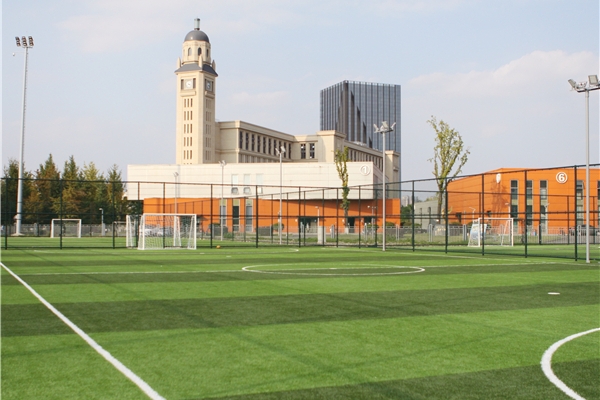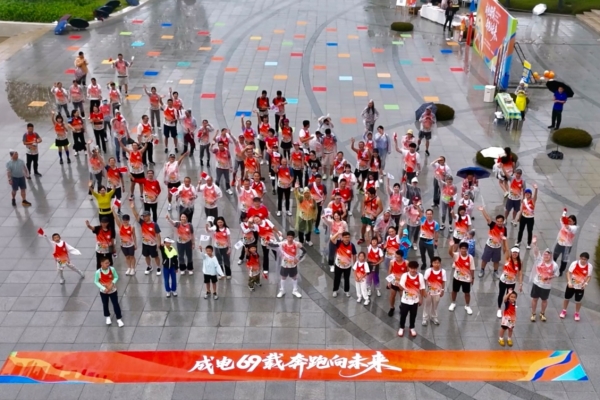即可将网页分享至朋友圈
教师发展中心“名师讲堂”活动特别邀请南方科技大学Alexander Kurganov教授来校作学术交流,具体安排如下,欢迎广大师生参加。
一、主 题:Low-Dissipation Central-Upwind Schemes
二、时 间:2023年4月17日(周一)16:30-17:30
三、地 点:清水河校区主楼A1-513
四、主讲嘉宾:南方科技大学 Alexander Kurganov 教授
五、主持人:数学科学学院 李茂军 副教授
六、内容简介:
The talk will be focused on central-upwind schemes, which are simple, efficient, highly accurate and robust Godunov-type finite-volume methods for hyperbolic systems of conservation and balance laws. I will first briefly go over the main three steps in the derivation of central-upwind schemes. First, we assume that the computed solution is realized in terms of its cell averages, which are used to construct a global in space piecewise polynomial interpolant. We then evolve the computed solution according to the integral form of the studied hyperbolic system. The evolution is performed using a nonsymmetric set of control volumes, whose size is proportional to the local speeds of propagation: this allow one to avoid solving any (generalized) Riemann problems. Once the solution is evolved, it must be projected back onto the original grid as otherwise the number of evolved cell averages would double every time step and the scheme would become impractical. The projection should be carried out in a very careful manner as the projection step may bring an excessive amount of numerical dissipation into the resulting scheme as was the case in previous versions of the central-upwind schemes.
In order to more accurately project the solution, we have recently introduced a new way of making the projection. A major novelty of the new approach is that we use a subcell resolution and reconstruct the solution at each cell interface using two linear pieces. This allows us to perform the projection in the way, which would be extremely accurate in the vicinities of linearly degenerate contact waves. This leads to the new second-order semi-discrete low-dissipation central-upwind schemes, which clearly outperform their existing counterparts as confirmed by a number of numerical experiments conducted for both the 1-D and 2-D Euler equations of gas dynamics in both single- and multifluid settings.
The accuracy of the low-dissipation central-upwind schemes can be further increased in two ways. First, we develop a scheme adaption strategy: we automatically detect "rough" parts of the computed solution and apply an overcompessive slope limiter in these areas at the piecewise linear reconstruction step. The adaptive low-dissipation central-upwind schemes achieve a superb resolution in a variety of challenging numerical examples. Second, we utilize the new low-dissipation central-upwind numerical fluxes to construct new fifth-order finite-difference A-WENO schemes, which outperfom their existing A-WENO counterparts based on less accurate central-upwind numerical fluxes.
七、嘉宾简介:
Professor Alexander Kurganov graduated from the Moscow State University in 1989. He then earned his PhD degree from Tel Aviv University in 1998. After holding a three-year Assistant Professor position at the University of Michigan, he moved to Tulane University, where he worked as an Assistant, Associate and Full Professor of Mathematics from 2001 to 2019. In 2016, Alexander Kurganov arrived at SUSTech as a Full Professor, in 2017 he was selected in the National Thousand Talents Plan and in 2019 he was promoted to the Chair Professor.
Prof. Kurganov research is focused on numerical methods for hyperbolic PDEs and related problems. His particular area of expertise is finite-volume, particle and operator splitting methods with applications to a wide variety shallow water models, compressible gas dynamics equations, multi-component and multi-phase fluids, PDE based models of chemotaxis, pedestrian and traffic flows, financial mathematics, and several other areas.
八、主办单位:教师发展中心
承办单位:数学科学学院
编辑:赵海玲 / 审核:林坤 / 发布:陈伟


